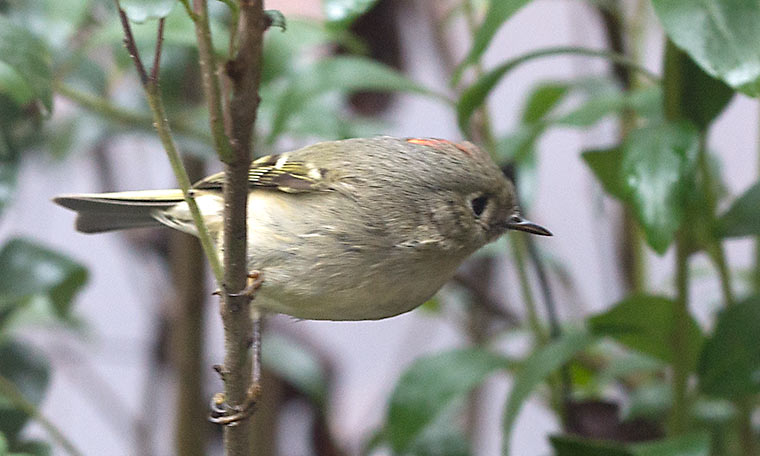I hope you enjoyed my April fool picture of a sea turtle on the turtle raft in the lake in our back yard. Last April 1, if you remember, I had a Tyrannosaurus rex among our bird feeders. I promise no more funny business (until next April 1).
Ruby-crowned Kinglets (Regulus calendula) have been visiting our suet feeders lately. They are very small (3.5 to 4.5 inches long, smaller even than a chickadee) and quick, and they constantly flick their wings as they move about. Other distinguishing features are two white wing bars, a white eye ring, and a red crest. The red crest is distinctive, but only the males have it. Also, the red crest is usually covered by surrounding feathers. Except for the lack of the crest, the females are similar in color and markings to the males.
The scientific name of this species was given by Linnaeus. His generic name for the bird seems to fit rather well. Regulus is from the Latin for “petty king” and refers to the small size and possession of a crown (the red crest). Why he chose “calendula“, which is a diminutive of “calendar”, is not clear. Perhaps it refers to the regularity of the bird’s return during its annual migration.
The two photographs above show the red crest of this bird somewhat better than my my first picture, but the crown can be raised even further if the bird is excited by a potential predator or a rival male.
These delightful little creatures will be leaving here soon, because they are migratory and nest in spruce-fir forests in Canada, the Northern U.S., and down through higher elevations in the western part of the U.S.


